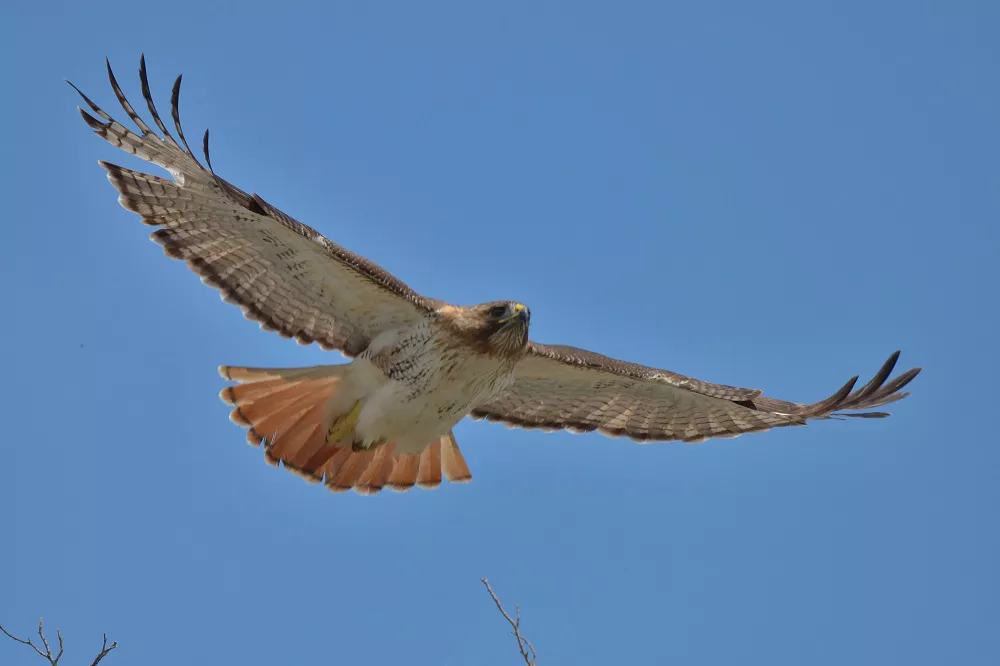Red-tailed hawks (Buteo jamaicensis) are one of the most common and widespread birds of prey in North America. These majestic birds are known for their distinctive red tail feathers, which give them their name. However, identifying a juvenile red-tailed hawk can be challenging, as their markings are quite different from those of adult birds. In this article, we will provide you with some tips and techniques for identifying a juvenile red-tailed hawk.
Physical Characteristics
Juvenile red-tailed hawks are larger than most other hawks found in their range. They have a wingspan of around 3 feet and can weigh up to 3 pounds. Juvenile birds have a bulky appearance, with a round head, thick legs, and a thick, short tail. Their plumage is generally darker than that of adult birds, with a mottled brown and white pattern on their chest and belly.
Plumage:
Juvenile Red-Tailed Hawks exhibit plumage distinct from their mature counterparts, characterized by a mottled and streaked appearance. Their feathers often display a combination of warm brown, tan, and buff shades. The overall plumage pattern serves as a camouflage mechanism, enabling them to blend into their surroundings during their formative years. The coloration on their undersides tends to be lighter, with pale cream or white feathers prominently displayed.
Tail Feathers:
Unlike the reddish-brown tail feathers for which adult Red-Tailed Hawks are named, juvenile individuals possess a tail with brown and white bands. These bands are evenly spaced and extend across the tail’s width. This distinguishing feature aids in the identification of juvenile Red-Tailed Hawks and differentiates them from the solid reddish-brown tail of mature individuals.
Head and Eye Color:
The head of a juvenile Red-Tailed Hawk typically appears lighter in color compared to adults, often exhibiting a pale tan or buff hue. Their eyes are a striking feature, displaying a distinct yellow coloration. This vibrant eye color sets them apart from adult Red-Tailed Hawks, whose eyes gradually transition to a darker shade as they mature.
Size and Shape:
Juvenile Red-Tailed Hawks are generally similar in size and shape to adult birds. They exhibit a compact and robust build with broad wings, allowing for efficient flight and maneuverability. Despite their youth, they still possess a wingspan that spans approximately 43 to 56 inches (109 to 142 centimeters). Their size and shape resemble that of adult Red-Tailed Hawks, making it essential to focus on other identifying features during the observation.
Behavior:
While observing a juvenile Red-Tailed Hawk, its behavior can also provide valuable clues for identification. Young birds often exhibit a level of curiosity and inquisitiveness, exploring their surroundings and testing their flight abilities. They may engage in playful flights, practicing their hunting techniques and honing their skills. It is not uncommon to see juvenile Red-Tailed Hawks perched prominently on tree branches or utility poles, surveying their surroundings while occasionally engaging in short flights.
Time of Year:
Identifying a juvenile Red-Tailed Hawk can also be influenced by the time of year. Juveniles are typically seen during the late spring and summer months, as this is when they fledge from their nests and begin to explore the world independently. Observing their behavior and appearance during this time can provide further confirmation of their juvenile status.
Conclusion:
Identifying a juvenile Red-Tailed Hawk requires attention to specific characteristics and behaviors unique to their early stages of life. By examining their plumage, tail feathers, head coloration, and behavior, one can successfully differentiate them from their adult counterparts. Understanding these distinctive features contributes to a deeper appreciation of the life cycle and development of these magnificent raptors, enriching our understanding of their remarkable journey from youth to adulthood.
Related Topics:


 Facebook
Facebook  Instagram
Instagram  Youtube
Youtube 